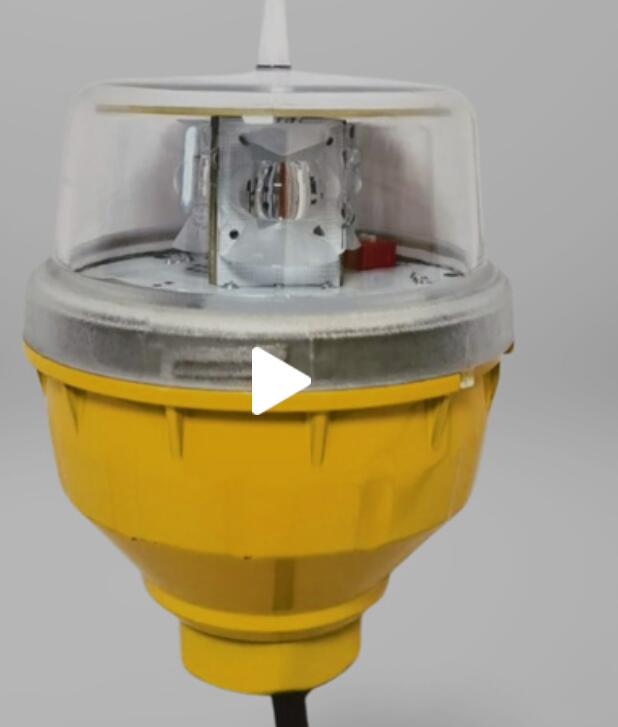Factors Influencing L 810 Obstruction Light Price: What Buyers Should Know
In the field of aviation safety and obstruction marking, the L 810 obstruction light holds a significant position. As a low-intensity red light approved for marking structures under 45 meters in height, it is widely used on communication towers, buildings, smokestacks, and utility poles. For facility managers, procurement teams, and infrastructure planners, one frequently asked question is about the L 810 obstruction light price. While specific prices may vary across manufacturers and suppliers, it is important to understand the key factors that influence the cost and long-term value of these lights.
Understanding the L 810 Obstruction Light
The L 810 is a standard designation defined by the FAA (Federal Aviation Administration) for a low-intensity, steady-burning red light. It is primarily used for night-time visibility of obstacles that do not exceed the height limits for medium- or high-intensity lighting. This type of light is often mounted at the top and intermediate levels of fixed structures and plays a critical role in aviation safety by helping pilots identify and avoid hazards during low-altitude flight.

Modern L 810 lights typically utilize LED technology, offering increased efficiency, reliability, and lifespan compared to older incandescent designs.
Core Features of L 810 Obstruction Lights
Before examining what affects the L 810 obstruction light price, it's important to outline the typical features that define this product category:
Steady-burning red LED output (usually at 32.5 candela minimum intensity)
| l 810 obstruction light price |
Low power consumption
Long lifespan (often over 50,000 hours)
Durable housing for weather resistance
FAA L-810 certification or ICAO compliance
Compact, lightweight design
Optional features: photocell control, alarm output, surge protection
Not all lights are created equal—variations in quality, material, and function have a direct impact on pricing.
Key Factors That Influence L 810 Obstruction Light Price
1. Technology Used
The most influential factor is the type of light source. LED-based lights have largely replaced incandescent lamps due to their extended operational life, lower maintenance needs, and higher energy efficiency. However, advanced LED optics and circuitry can add to initial cost, especially in models that offer dimming, diagnostics, or remote monitoring capabilities.
2. Build Quality and Materials
High-grade materials such as UV-resistant polycarbonate lenses, marine-grade aluminum housing, or IP66-rated enclosures enhance durability but also affect pricing. Lights designed for harsh environments, such as offshore wind farms or tropical climates, must meet higher protection standards, influencing their price accordingly.
3. Certifications and Compliance
Compliance with aviation regulations is mandatory. Models that are FAA L-810 approved or ICAO Type A certified may undergo more rigorous testing and quality control, contributing to their overall cost. Some manufacturers also offer third-party certified lights that meet additional national or regional standards.
4. Power Source Options
Most L 810 lights operate on AC (120–240V) or DC (12–48V) power, but models that support both—or include integrated power conversion—may have a higher base cost. Additionally, solar-powered L 810 lights with built-in batteries and solar panels are priced differently due to the added components and self-sustaining design.
5. Integrated Features
Modern L 810 obstruction lights can include a range of value-added features, such as:
Photocell for automatic day/night operation
Alarm dry contacts for failure detection
Surge protection devices
Remote monitoring capabilities via wireless or wired networks
Each feature adds to the functionality—and the price—of the light, but often provides significant long-term savings in maintenance and monitoring.
6. Mounting Configuration
Different structures require different mounting types—pole mount, flange mount, pipe mount, or custom brackets. Some lights come with universal mounting kits, while others require separate purchases, which may affect the final price of the full lighting solution.
7. Manufacturer Reputation
Established manufacturers with a proven track record in aviation lighting may command a premium for their products due to:
Reliable customer support
Warranty coverage
Proven performance in the field
Global compliance assurance
While lower-cost alternatives may exist, reliability and longevity can vary greatly between brands.
Operational Cost vs. Initial Price
Focusing only on the L 810 obstruction light price at the time of purchase may not provide a complete picture. A low-cost unit with a shorter lifespan or higher failure rate may incur greater maintenance, replacement, and energy costs over time.
LED models with higher upfront costs typically pay off through:
Reduced energy consumption
Fewer service visits
Longer intervals between replacements
Improved uptime and safety compliance
When evaluating options, buyers should weigh Total Cost of Ownership (TCO) rather than base price alone.
Deployment Considerations
Before finalizing a purchase, stakeholders should consider:
Site-specific requirements: Urban vs. remote, climate conditions, altitude
Number of lights required: Based on structure height and layout
Integration with other systems: Compatibility with tower monitoring platforms or SCADA systems
Redundancy needs: Backup power or dual lighting systems for critical sites
Industry Trends Impacting Pricing
Several trends are shaping the market for L 810 lights and may influence future price dynamics:
Increased use of solar-powered solutions in off-grid locations
More compact, all-in-one designs for faster installation
Regulatory pressure for low-impact, dark-sky compliant lighting
Growth of unmanned aerial systems (UAS) driving new marking requirements
Global supply chain fluctuations affecting component costs
While the L 810 obstruction light price may vary depending on many factors, understanding what influences that price helps buyers make informed decisions. Beyond the base cost, features such as LED technology, environmental durability, compliance certifications, and smart functionality all contribute to the overall value of the product.
In aviation safety, where the cost of failure is high, choosing the right obstruction lighting solution is not just about budget—it’s about long-term performance, reliability, and compliance. Whether for a single rooftop antenna or an entire wind farm, selecting the proper L 810 light ensures that the airspace remains visible, safe, and well-marked.
